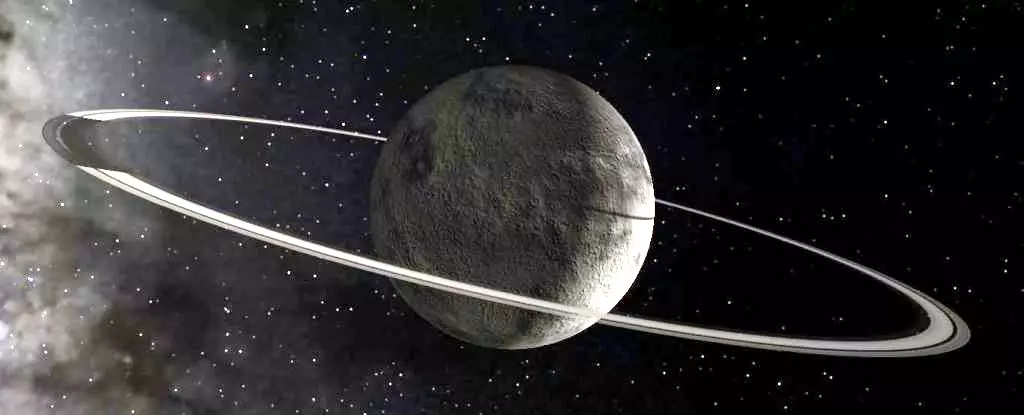In the vast expanse of our Solar System, particularly beyond the orbit of Jupiter, lies an intriguing celestial body known as Chiron. Classified as a centaur, Chiron defies conventional categorization among its peers, prompting astrophysicists to delve deeper into its distinctive characteristics. Recent observations from the James Webb Space Telescope (JWST) have illuminated aspects of Chiron that set it apart from other centaur bodies, revealing a series of peculiar behaviors and attributes that captivate astronomers and planetary scientists alike.
Centaurs are generally classified as hybrid bodies, exhibiting features characteristic of both asteroids and comets. They occupy the region between Jupiter and Neptune and have orbits that inevitably bring them close to the gravitational influence of the giants. Schambeau, a physicist from the University of Central Florida, asserts that Chiron is an anomaly within this group. Unlike most centaurs, which typically adhere to predictable patterns of behavior, Chiron occasionally demonstrates comet-like activity, including the ejection of gas and dust into space. Furthermore, it boasts the remarkable presence of rings, akin to the majestic rings of planets like Saturn, hinting at a debris field that could provide further clues about its origins.
Observational studies suggest that Chiron functions as a remarkable time capsule, holding remnants from the Solar System’s inception approximately 4.5 billion years ago. Pinilla-Alonso, a researcher from the University of Oviedo, emphasizes that studying active centaurs like Chiron allows scientists to peer back into the Solar System’s formative years. By analyzing the surface and subsurface materials alongside their transient activity, researchers aim to unravel the complexities that define these celestial bodies.
The JWST’s capabilities have enabled scientists to scrutinize the chemical composition of Chiron, especially its coma—a diffuse cloud of gas and dust that surrounds the centaur during active phases. Pinilla-Alonso’s research team utilized near-infrared spectroscopy to identify various gases that tell a compelling story about Chiron’s evolution. Their findings included notable discoveries such as carbon dioxide, carbon monoxide, and, most remarkably, methane—each signifying a variety of environmental and chemical processes at play.
In uncovering Chiron’s diverse composition, scientists theorize that some materials observed on the centaur are remnants of its primordial origins, inherited from the cosmic debris surrounding the early Solar System. The solid icy components, such as water ice and carbon compounds, may encapsulate the conditions that prevailed during the formation of our planetary system. Notably, the presence of methane signals a potentially complex chemical landscape, hinting at ongoing reactions—like oxidation and reduction—that underscore the active geological processes shaping Chiron’s surface.
Chiron’s Evolving Nature
As astronomers continue to monitor Chiron, they are not only studying its static characteristics but also its evolutionary trajectory. As it journeys closer to the Sun, Chiron experiences substantial changes driven by solar heating. Observational data from the JWST is crucial not only for understanding its present state but also to predict how its composition and behavior may evolve over time. By examining seasonal changes and other variables, researchers may unearth underlying patterns that govern the activities of centaurs like Chiron.
The scientific community is spirited about Chiron’s future observations. Ongoing studies will be focused on its behavior as it becomes more accessible in the coming years. The challenge remains—in parsing through the unique characteristics displayed by Chiron and other centaurs, scientists seek to identify whether these eccentricities are random anomalies or indicative of a deeper commonality among these celestial wanderers.
As the JWST continues to reveal new dimensions of Chiron and other members of the centaur family, the opportunity to refine our understanding of their role in the Solar System’s history becomes increasingly compelling. Ultimately, these unique centaurs may hold the secrets to understanding the origins and evolution of the celestial bodies that share our cosmic neighborhood.
Chiron stands as a testament to the mysteries that still abound in our Solar System. With its unique behaviors, complex composition, and the potential for further discoveries, studying Chiron promises to deepen our understanding of how celestial bodies interact and evolve over time. It is through the prism of investigations like these that our knowledge of the universe expands, enriching our comprehension of both our cosmic origins and the processes that continue to shape our celestial landscape.


Leave a Reply